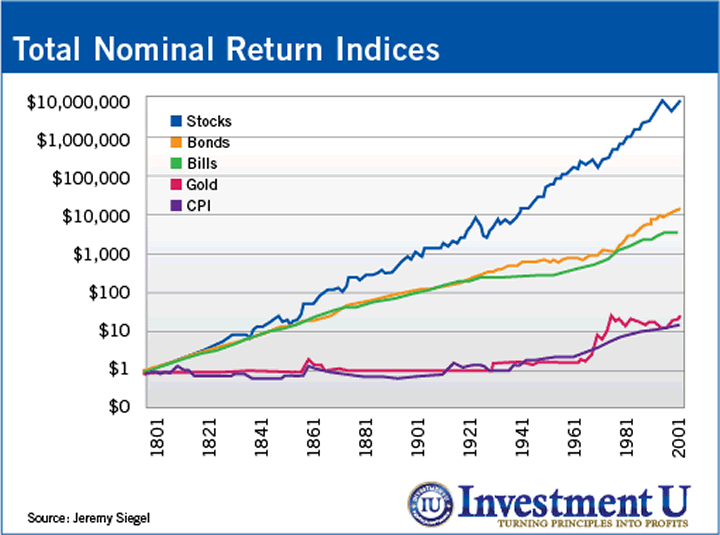By: Investment_U
Alexander Green writes: On Friday, Dr. Mark Skousen wrote an Investment U column titled “In Defense of Gold… and “Gold Bugs.” Skousen is a free-market economist, a former college professor, the 30+-year editor of Forecast & Strategies, the founder of the libertarian conference FreedomFest and the author of more than 20 books. He is also a good friend and colleague.
That’s why I can say, “Mark, you cannot be serious.”
I have argued over the last few weeks that, contrary to popular opinion, gold is not a good inflation hedge. In his rebuttal, Skousen argued the opposite.
He said: “If a smart investor had bought gold at $35 an ounce in 1970, as Harry Browne and other astute gold bugs recommended back then, today’s price of $1,240 an ounce doesn’t look too bad – it presents a 34-fold increase over a 43-year period.”
Gold Prices Were Fixed
This is an odd argument for a “free market” economist to make, as the price of gold was strictly regulated at that time. Thirty-five dollars was, after all, the official gold price as set by the United States Treasury beginning in 1934.
In 1971, Nixon issued an executive order raising the price of gold to $38 an ounce. And in 1972, the gold standard price was raised to $42.22. Later that year all government price controls ended.
I would argue that you don’t have to be a “smart investor” to buy a commodity the government is price-fixing at an artificially low price. You need only be an investor with a pulse and half a brain.
But what does any of this have to do with gold as an inflation hedge today? Nothing.
The price of gold is no longer fixed by the Treasury. And history reveals a lot about what happened to this “hedge” since.
Yes, gold soared once Uncle Sam took the shackles off in the ‘70s. But look back at the hyperinflationary early ‘80s. Gold prices plunged right through them.
The U.S. experienced a significant rise in consumer prices every year from 1980 through 1999, yet the price of gold over that period bears an uncanny resemblance to the last flight of the Hindenburg.
Just a bad period for gold? Yes, but the longer view is gloomy as well.
Take a look at Dr. Jeremy Siegel’s chart from his investment classic Stocks for the Long Run showing the 200-year history of various financial assets, including gold. (Yes, it ends in 2006, but that doesn’t change much.)

As you can clearly see, over the last two centuries gold has underperformed every type of “paper asset”: bills, bonds and stocks. Of course, Skousen knows this. He cited these numbers his column.
Big Mistakes
Gold investors are making two big potential mistakes today. The first is assuming that inflation (or hyperinflation) will be the result of the federal government’s free-spending ways. That is a possibility, of course, but not a probability. Take a look at Japan. Their national debt as a percentage of GDP is three times ours. Yet their struggle has not been with inflation, but the opposite. The country has fought deflationary forces for almost 25 years.
The second mistake gold investors make is blithely assuming that gold will rally if we do have higher inflation. Not necessarily.
When gold had its tremendous run over the last decade, it priced in all kinds of potential nasty economic developments. But with each passing week those fears are lessening. Thus gold sank 23% to $1,223.80 in the second quarter.
If the trend is your friend, gold investors should gird their loins.
To summarize my position: You should own blue chip gold shares as an excellent portfolio diversifier – they correlate with almost nothing – and because they have performed over the long haul almost as well as the S&P 500.
But is gold itself an excellent long-term inflation hedge, as Skousen argues? If you compare it to putting your money in the mattress, yes. But if you compare it to the investment alternatives – and historical returns – of bonds, bills, notes and stocks, the answer is clear.
No comments:
Post a Comment